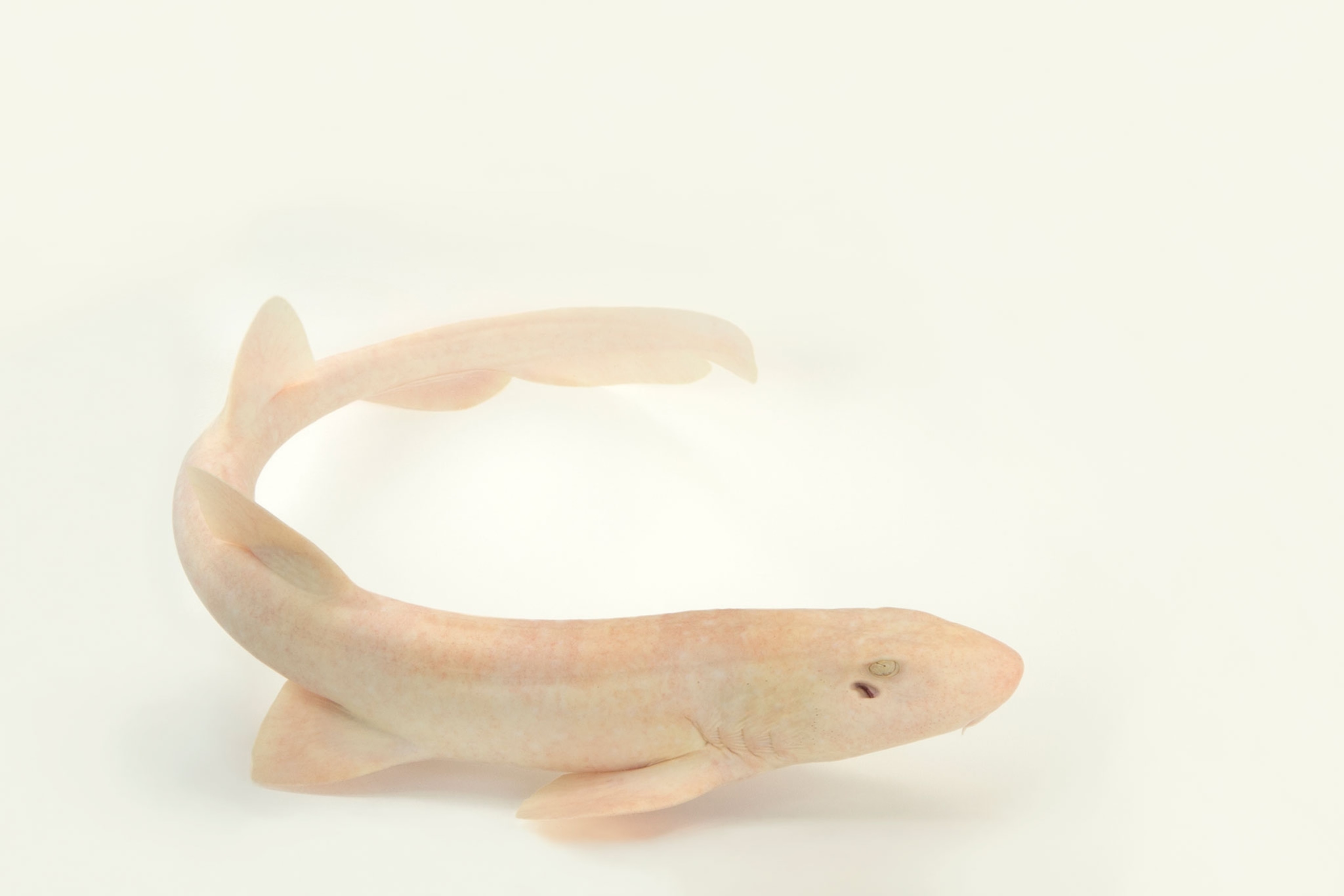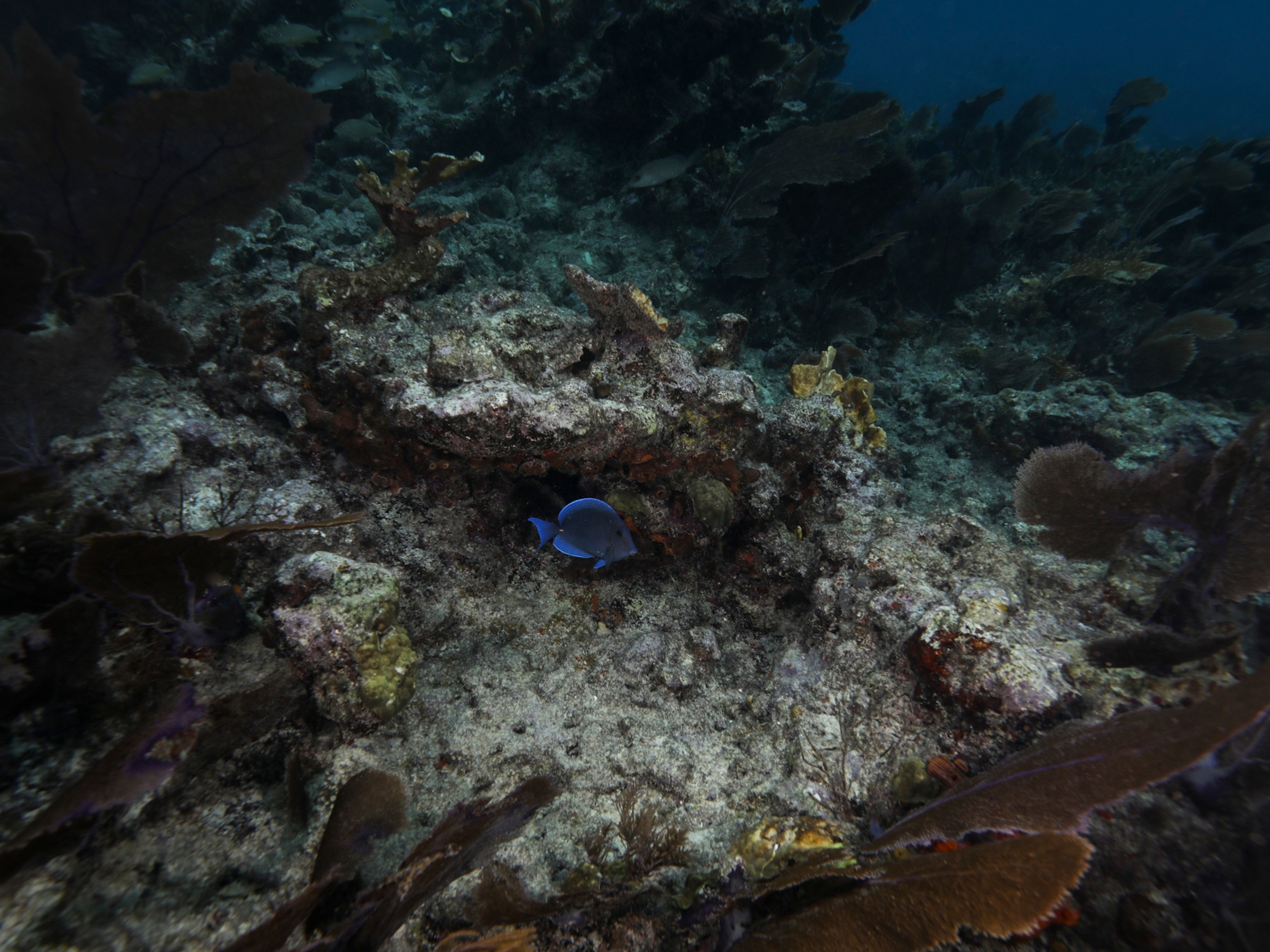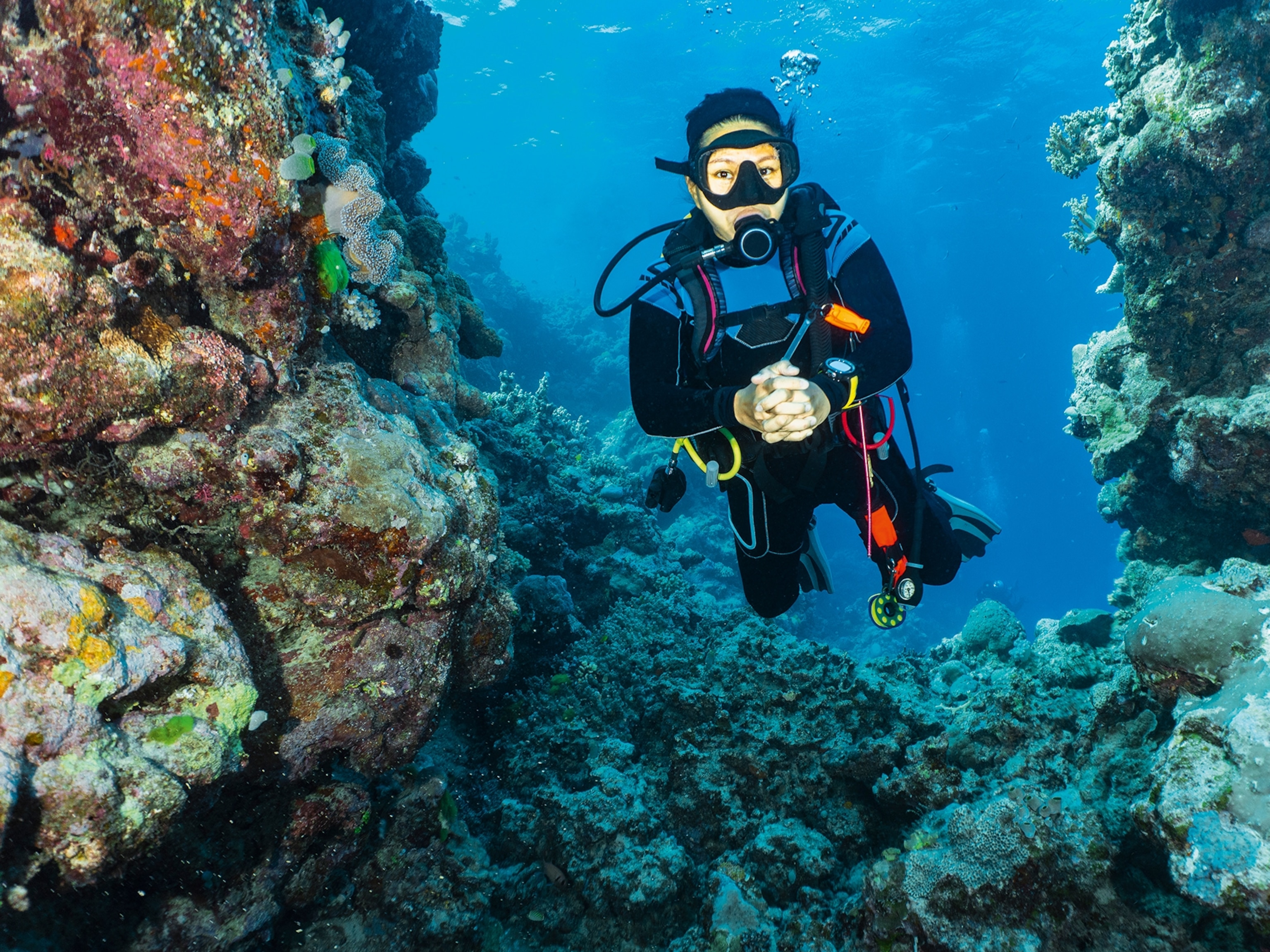
These Sharks Feed in a Surprising Way
Scientists use new technology to discover how some sharks eat food.
Sharks don't have tongues to help them swallow food, so instead, some shrug their shoulders to keep prey moving to their stomachs.
The behavior was recently discovered for the first time by scientists using sophisticated X-ray imaging, which revealed that bamboo sharks swing their shoulders internally when they eat.
By pulling their pectoral girdle (or “shoulder girdle”) back, bamboo sharks create suction to draw food through the back of the mouth and further into the digestive tract, says Ariel Camp, a Brown University researcher and lead author of the study, published in Proceedings B, a Royal Society journal.
Bamboo sharks are reef dwellers found throughout the Indian Ocean. They're small in size—only growing to between 24 and 37 inches long—and much of their time is spent looking for prey.
Suction feeding is used by many sharks—and other fish, as well—to consume gulps of prey. By rapidly and widely opening their mouths, sometimes using muscles deep in their bodies, fish can create the suction needed to draw prey into their bodies. (Read “This Shark Eats Grass and No One Knows Why”)
Although sharks use their pectoral fins to swim and position themselves over prey, questions were gradually raised about the functions of the shoulder girdle.
In ray-finned fish, such as catfish, the pectoral girdle is directly attached to the skull and retracts when suction feeding occurs. In sharks, however, the pectoral girdle is disconnected from the jaws and other parts of the head, which led scientists to further examine whether it plays a role in the way sharks eat.
"Sharks have this long pharynx, and they have to keep food moving down it," Camp said. "We now think this is part of a 'hydrodynamic tongue.' Sharks and fish that don't have a tongue control the motion of fluid within their mouths to manipulate food."
This means bamboo sharks use their shoulders, composed of a u-shaped girdle of cartilage and various attached muscles, for feeding as well as to control the front-most fins for locomotion. (Read “Mysterious Ghost Sharks’ Sex Habits Revealed”)
Scanning the Sharks
To observe this behavior, Camp and her colleagues from Brown University, the University of Alaska at Anchorage, and the University of Illinois used a technology developed at Brown called X-ray Reconstruction of Moving Morphology (XROMM) to observe how three white spotted bamboo sharks ate pieces of squid and herring.
The system combines CT scans of the shark’s skeleton with high-speed, high-resolution X-ray imaging, aided by tiny implanted metal markers, to create precise three-dimensional visualizations of how bones and muscles move within animals and people.
Past studies involving the pectoral girdle had little focus on its potential to function in both feeding and movement behaviors—especially because layers of skin and muscle made external measurements difficult to record.
Camp said the XROMM animations, however, were crucial to this research: “XROMM allowed us to actually see what the pectoral girdle is doing in these sharks.”
Additionally, the new technology allowed researchers to measure a “surprising swing” in the shoulder girdle of all three sharks tested as the they ate their food, Camp said. Just a fraction of a second after the mouth closed, the cartilage quickly rotated backward (from head to tail) by about 11 degrees. (Read “These Sharks Thrive Inside an Underwater Volcano”)
“Most certainly, the authors make a strong case for the duality of the pectoral girdle in this species,” said Phillip Motta, a biology professor at the University of South Florida who was not involved with the research. “However, we still don't know how food actually enters the start of the shark's esophagus and goes down."
In suction feeders like the bamboo shark and the nurse shark, Motta said, the food has already entered the mouth when it's open widest. So, while the new research supports the notion that the bamboo shark moves its shoulder girdle to help move food from inside the mouth to the throat, Motta added that it doesn't indicate that the movement supplements suction of food into the mouth or down the esophagus.
Although bamboo sharks were the only species observed during the study, the authors said it’s possible that other suction-feeding sharks also move their shoulders in this way.
The new research can also shed light on ways the shoulder girdle evolved in sharks and other fish over time. The girdle shows up in the fossil record around the time that jaws evolved, Camp said, although scientists aren’t sure exactly what structures it evolved from or how that happened.
Studying the pectoral girdle in living animals can help researchers learn more about how it may have functioned and evolved in early, now-extinct fish, and understanding how fish skeletal structures evolved can even help explain how some creatures eventually became capable of making it to land.
“We hope that this study will encourage other researchers to re-examine the structure and evolution of the pectoral girdle from this new perspective,” Camp said. “Our observations of pectoral girdle motion in bamboo sharks are a first step; more work is needed to understand pectoral girdle motion in other sharks and fishes.”
Follow Casey Smith on Twitter.





